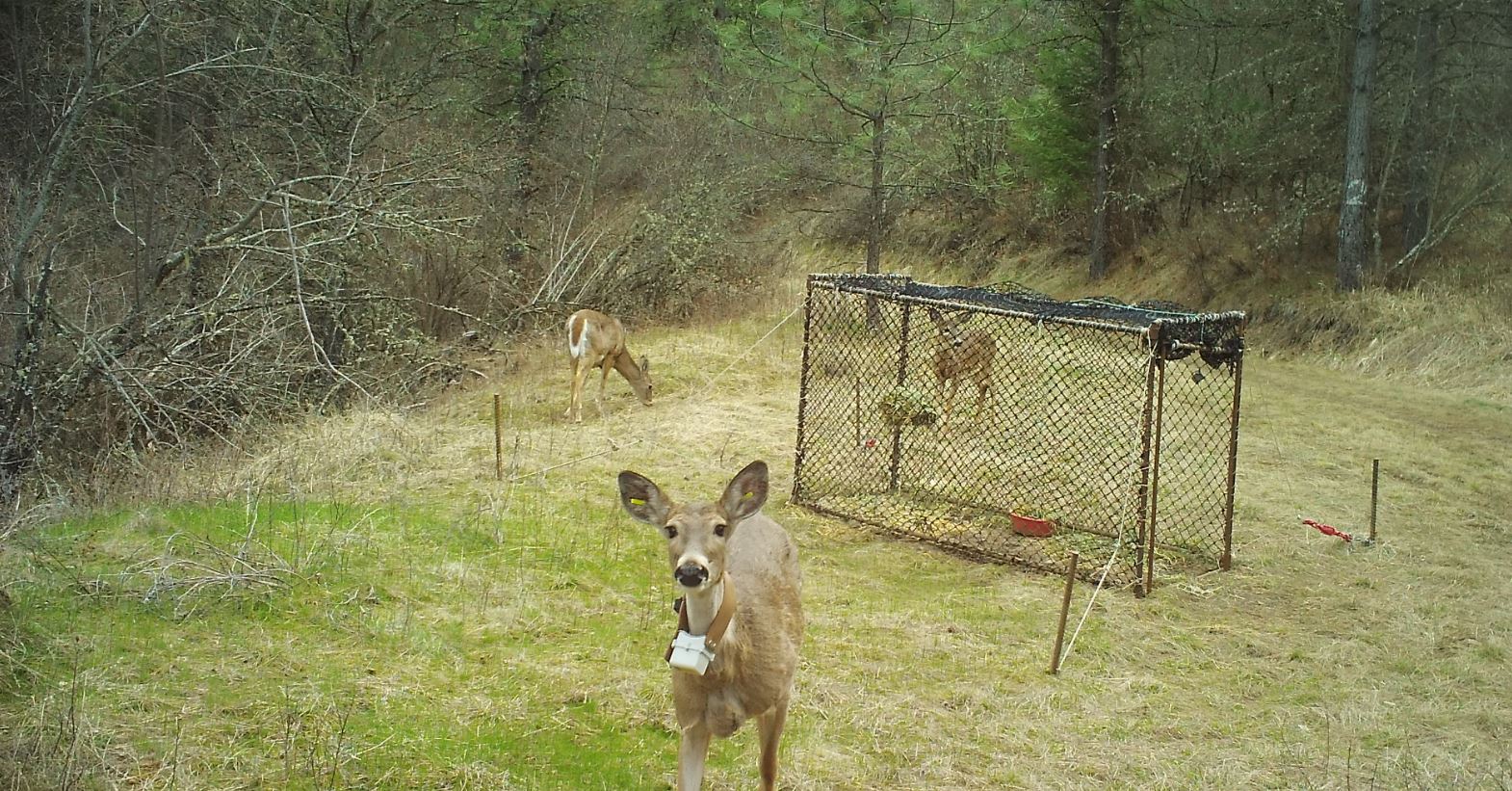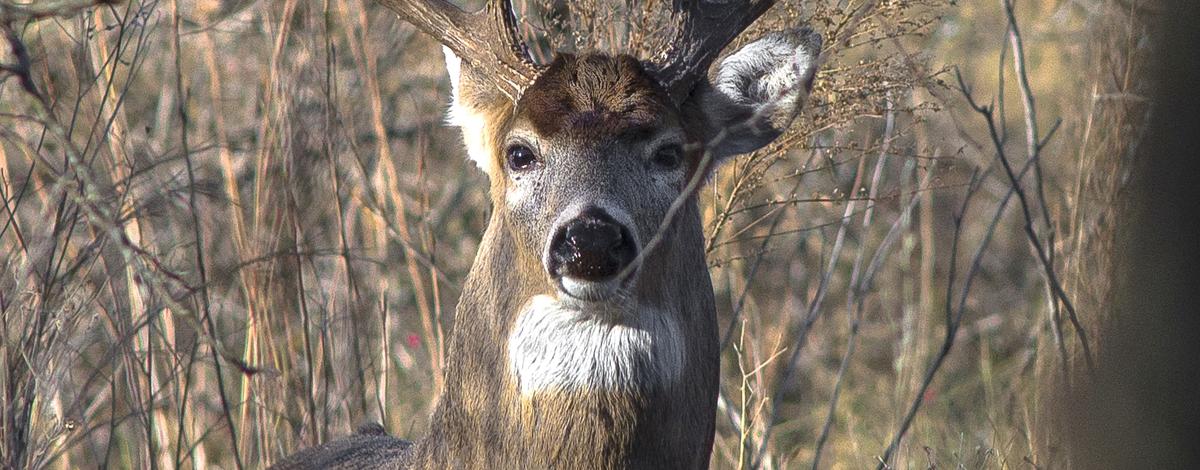Idaho Fish and Game is asking deer hunters to look at its draft management plans for mule deer and white-tailed deer and provide feedback to the department on the overall concepts of the plans and whether topics are missing that might improve them. The plans describe statewide management directions and strategies.
The white-tailed deer plan focuses on a variety of topics that include population management and also frameworks and concepts for hunting seasons that will maintain sustainable deer herds and strive to meet hunters’ expectations.
Both plans are the result of extensive hunter surveys that were done in 2017-18 where mule deer and white-tailed hunters shared their expectations. Those surveys were incorporated into the draft plans, which will guide deer herd management over the next six years.
Hunters will get a full look at each plan in early June and have about a three-week comment period, which will include open houses in each region. Dates of those open houses will also be listed in early June when the plans go online.
Balancing overall satisfaction with contending desires
The 2018 survey of nearly 8,000 white-tailed deer hunters indicated that most were satisfied with white-tailed deer management overall. Based on the survey, satisfaction was high for the number of days of white-tailed deer hunting opportunity offered under existing hunting seasons, the opportunity to harvest a white-tailed deer, and the opportunity to harvest a mature white-tailed deer buck.

The intent of the new management plan is to continue the management practices that result in high hunter satisfaction — including general either-sex white-tailed deer seasons for all weapon types where populations can support it.
While hunters overall were satisfied with white-tailed deer management, wildlife managers realize that there are contending desires, both between hunters and landowners and among hunters themselves. In the survey, a minority of hunters expressed a desire for more opportunities to hunt mature bucks, concerns over seasons being too long, hunter congestion in some of the most popular hunting units, and lack of access to private land.
Some white-tailed deer hunters also voiced concerns about how wildlife managers monitor white-tailed deer populations in Idaho.
In much of North America, including Idaho, white-tailed deer are traditionally managed using harvest objectives and harvest-based modeling. It’s been shown white-tailed deer populations can be reliably monitored and managed using this approach. But the draft management plan identifies the need for more intensive white-tailed monitoring, which will help managers know when populations change, adapt management to those changes, and better understand and explain the causes of those changes.
Setting the stage for white-tailed deer research
A primary focus of 2020-25 White-Tailed Deer Management Plan is developing and implementing a robust research plan for the species.
Mule deer and elk have historically received the bulk of the research emphasis in Idaho, while research on white-tailed deer has occurred sporadically and has been relatively narrow in scope.
Compared with the elk and mule deer, wildlife managers know much less about Idaho’s white-tailed deer population. The secretive nature of white-tailed deer and the densely vegetated areas where they live has limited biologists’ ability to collect precise biological information using traditional methods.
To date, researchers at Fish and Game have yet to find a population monitoring technique that provides reliable and cost-effective estimates of the number of white-tailed deer on the landscape, and the demographics of the herd.
The draft plan establishes the framework to address this disparity. It identifies a number of research projects that will take place over the next six years, and how to incorporate new and alternative methods for gathering biological data on white-tailed deer. They will provide wildlife managers with a better understanding of population ecology, habitat use, survival, mortality, and productivity of white-tailed deer in Idaho.

Researchers have already begun investigating cause-specific mortality, improved measures for buck quality, methods for monitoring populations, buck vulnerability to hunting, and agricultural depredation prevention. The information gained from this research will guide Fish and Game in future white-tailed management.
Continued emphasis on increasing hunter access
About 60 percent of the white-tailed deer hunters surveyed in 2018 agreed that Fish and Game should spend more time and resources developing access onto private land for the purpose of hunting, and providing access to sportsmen will remain an important objective.
Fish and Game will continue to work with partner agencies and private entities to improve access using a suite of tools, including the “Access Yes!” and the “Large Tracts” program, which recently secured access to 867,000 acres of private timberlands in the Panhandle and Clearwater regions.
Keeping an eye on hunter congestion issues
Statewide, hunter congestion was a smaller issue among white-tailed deer hunters than mule deer hunters. The draft plan notes that it could eventually become a bigger issue for white-tailed deer hunters, especially if measures are taken to address hunter congestion for mule deer that displace hunters into north Idaho, or converts them into white-tailed deer hunters. For that reason, it was important the white-tailed deer management plan also address issues of hunter congestion.
The growing number of white-tailed deer hunters has the potential to affect the quality of hunters’ experiences, as some feel it already has in some popular hunting units.
The draft plan looks at factors involved in hunter congestion and possible solutions, but does not include specific changes or recommendations. The concepts to change hunting seasons outlined in the plan represent a starting point for dialogue between wildlife managers and white-tailed deer hunters, but are not intended to be prescriptions for immediate implementation.
After the plan is approved, which is expected to be during summer, Fish and Game will present some concepts to hunters through future surveys and other public outreach methods, and managers will continue to seek input from white-tailed deer hunters while developing the rules for the 2021-22 big game rules.
Other topics addressed in the plan include:
- Habitat
- Agriculture and urban deer
- Illegal harvest and unlawful commercialization
- Disease
- Buck quality and management
- Antlerless harvest
Where do we go from here?
The draft mule deer and white-tailed deer plans are now available. Wildlife managers ask hunters to review those plans before attending open houses, commenting online, or contacting regional offices. Here's a summary of the draft mule deer plan.
The plans are a blend of scientific information and plain language, but the overall concepts are easily understandable for the average, informed hunter. However, much of the plan involves broad management prescriptions and concepts that typically do not go into unit-by-unit detail, nor does the plan provide season frameworks or specific rules, which are addressed in the big game season setting and rules process.
But wildlife managers want to know if hunters are in general agreement with the direction of the plans, or if there are topics or items missing that hunters think should be included.
Review and comment on mule deer plan
Review and comment on white-tailed deer plan

